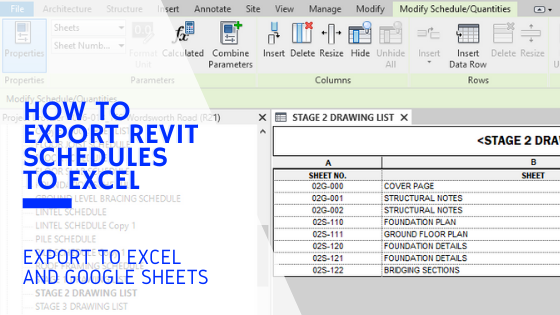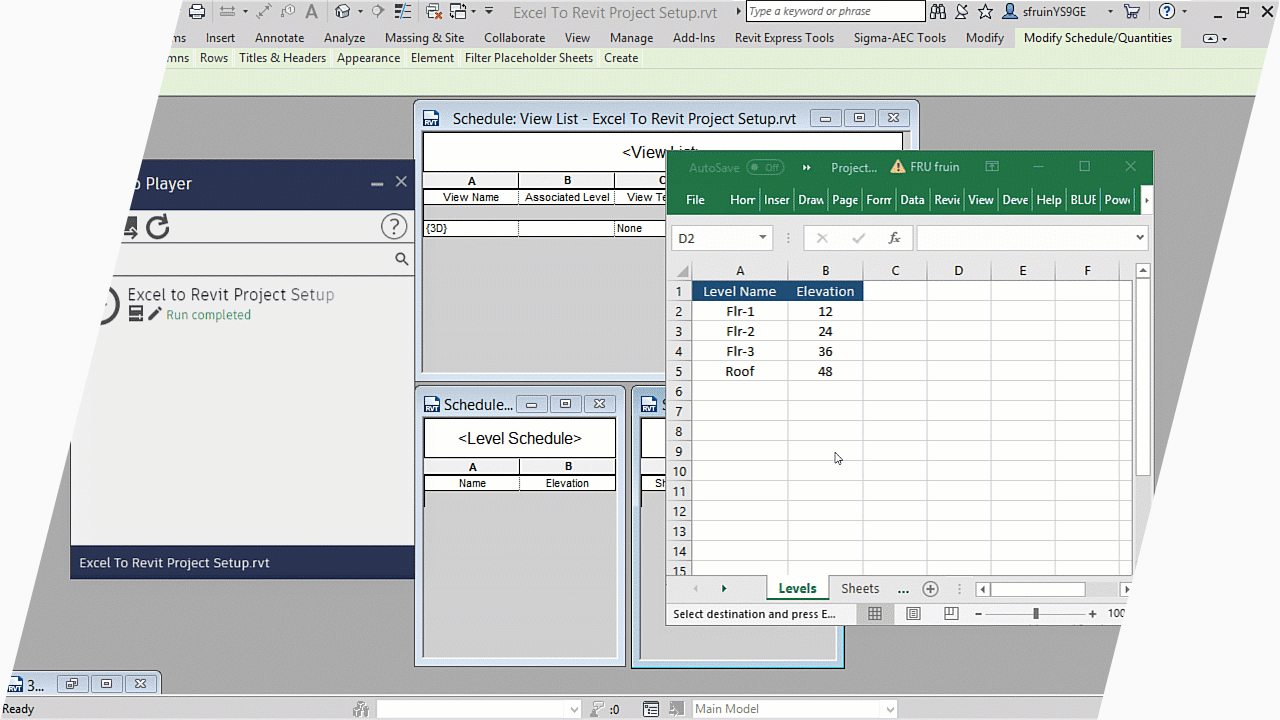Opening New Capabilities: Boost Revit Tools with the Right Plugins
Wiki Article
Excel Empowerment: Supercharge Your Revit Projects With Seamless Information Import
With seamless information import, Excel empowerment can be the key to opening your job's full possibility. Think of enhancing the import procedure and making best use of effectiveness via smooth data combination. In this short article, we will certainly share pointers and methods for using Excel in your Revit projects.The Power of Excel in Revit Projects
You can supercharge your Revit jobs by utilizing the power of Excel for smooth information import. Excel is a functional tool that can considerably enhance your operations and performance in Revit (revit plugins). With Excel, you can easily import and take care of large quantities of information, saving you effort and timeOne of the essential advantages of using Excel in Revit is its ability to take care of intricate calculations and formulas. You can make use of Excel to execute calculations on your data, such as producing amounts, calculating prices, or assessing performance. When working with large projects that require comprehensive calculations., this can be particularly helpful.

On top of that, Excel supplies a user-friendly and acquainted interface for dealing with data. You can organize and adjust your information in a spreadsheet format, making it very easy to watch and modify. This can be especially useful when teaming up with others or when you require to make fast adjustments to your job data.
In addition, Excel permits you to easily import and export data between Revit and other software application applications. You can import information from external sources into Revit, such as material requirements or equipment routines, and export information from Revit to Excel for further evaluation or reporting.
Streamlining Data Import With Excel in Revit
Simplifying information import in Revit becomes less complicated when making use of Excel as a tool. With Excel, you have the power to flawlessly import and manage large amounts of information in your Revit jobs. By making use of the familiar interface and performance of Excel, you can save time and rise performance in your workflow.One of the vital advantages of utilizing Excel for information import in Revit is the capacity to easily organize and control information before importing it into your job. With Excel's powerful attributes, such as arranging, filtering, and solutions, you can promptly clean up and style your data to meet the requirements of your Revit project.
Additionally, Excel allows you to import data from different resources, such as data sources, spread sheets, and even online applications. This flexibility offers you the liberty to gather data from different systems and combine it right into one central location for easy accessibility and monitoring.
In addition, Excel gives the alternative to develop custom design templates for information import in Revit. By developing layouts customized to your job's details requirements, you can make certain uniformity and accuracy in your information import procedure.
General, utilizing Excel as a tool for data import in Revit simplifies the procedure and boosts your performance. So why not take advantage of this effective device and supercharge your Revit jobs with seamless information import utilizing Excel?
Maximizing Performance With Seamless Information Combination
Make best use of performance by seamlessly incorporating and taking care of data in your workflow. Gone are the days of manually inputting information right into your system, throwing away precious time and sources. With seamless information combination, you can streamline your processes and supercharge your productivity.
When you have a seamless integration system in area,Handling information comes to be a breeze. You can quickly organize and classify your data, making it less complicated to fetch and examine. Bid farewell to the days of undergoing unlimited spread sheets for that a person item of info you need.

Excel Tips and Techniques for Revit Projects
With these ideas and methods, you'll have the ability to effectively handle your Revit projects utilizing Excel. Among the very first things you can do is to utilize Excel's effective sorting and filtering features. This will enable you to quickly organize and examine your project data. As an example, you can sort aspects by their names or filter them based upon details criteria, such as their condition or area. One more valuable attribute is the capacity to create formulas in Excel. You can utilize formulas to determine quantities, execute complicated calculations, and also automate particular jobs. This can save you a lot of time and initiative in your Revit jobs. In addition, you can make use of Excel to produce personalized design templates for information import and export. By doing this, you can guarantee uniformity and accuracy when moving data between Revit and Excel. Last but not least, do not forget Excel's conditional formatting attribute. You can use this to highlight specific aspects or worths based on particular problems. This can assist you rapidly identify and deal with any kind of issues or anomalies in your task data. Generally, mastering these Excel techniques and tips will substantially boost your ability to manage and control data in your Revit projects.Using the Excel-Revit Connection for Success
To make the most of your Excel-Revit link, make the most of the capacity to effortlessly move and integrate task info. By using this powerful link, you can supercharge your Revit jobs and improve your workflow. With just a couple of easy actions, you can import data from Excel straight into Revit, saving you time and making certain accuracy.Among the key benefits of look what i found the Excel-Revit link is the ability to move information effortlessly. Whether you are importing schedules, space information, and even geometry info, Excel gives an easy to use user interface that enables you to arrange and adjust your data prior to importing it right into Revit. This implies you can quickly upgrade and customize your project info in Excel, and with a couple of clicks, transfer those modifications straight right into your Revit version.
Along with transferring information, the Excel-Revit link additionally enables synchronization. This indicates that any kind of changes made in Excel can be immediately upgraded in Revit, ensuring that your project information is always as much as day. This synchronization attribute is particularly helpful when managing complex and large projects, as it gets rid of the requirement for hand-operated information entry and reduces the risk of errors.
Final Thought
So there you have it - the power of Master Revit jobs can not be underestimated. By streamlining data import and optimizing efficiency via smooth information assimilation, you can supercharge your projects and achieve success. With the Excel-Revit connection, you have the tools to take your jobs to the next degree and achieve remarkable outcomes. So don't wait any type of longer, begin taking advantage of the power of Master your Revit projects today and unlock a world of opportunities.You can supercharge your Revit projects by taking advantage of the power of Excel for seamless data import. With Excel, you have the power to flawlessly import and take care of big quantities of information in your Revit tasks (import excel into revit). Overall, grasping these Excel pointers and techniques will substantially enhance your ability to take care of and control information in your Revit projects
Whether you are importing schedules, space information, or even geometry details, Excel supplies an easy to use user interface that enables you to arrange and manipulate your data prior to importing it right into Revit. By enhancing data import and making best use of performance via seamless data combination, you can supercharge your jobs and attain success.
Report this wiki page